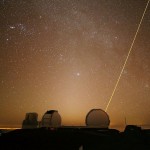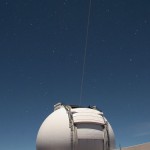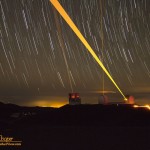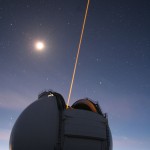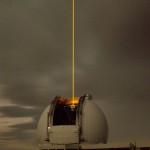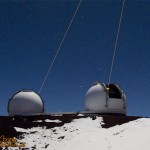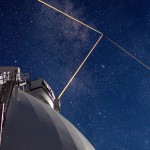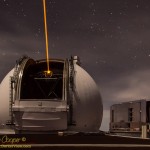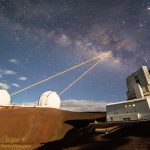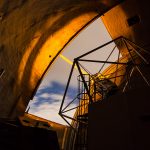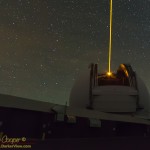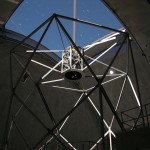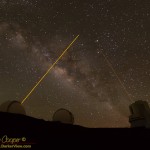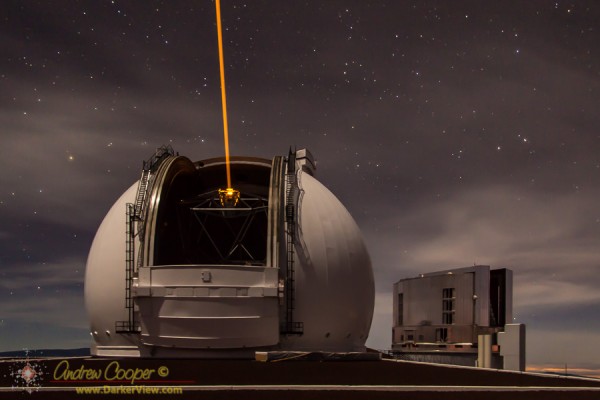Tag: AO
Dual Laser Milky Way Photo Op
The island is home to a vibrant community of photographers, a mix of professionals and serious amateurs. There is one set of photos everyone, and I do mean everyone wants… Dual lasers on the Milky Way.

Opportunities to see and photograph this are few, and occur strictly during the summer months of June to August, when the Milky Way is high overhead. furthermore, these opportunities occur only when Andre Ghez and her UCLA Galactic Center Group have both telescopes scheduled.
July 25th was such a night, a good opportunity to get both lasers. Andrea’s group has the first half of the night, turning over the ‘scopes to other astronomers just after midnight. Actually there were a few nights this particular week, we just chose the 25th. After this galactic center season is over, at least until next year.
A Laser Above the Summit
Changing a Light Bulb
How many engineers does it take to change a light bulb?

This is one of those times. A nightlog coded as critical, the Keck 2 adaptive optics system has a slight problem, no output from the white light source, no calibrations, no science. Waiting until after 9am I call the support crew on the summit… Do you know how? No. I wrestle with the thought for a few moments. No avoiding it, I need to drive to the summit.
So how many engineers does it take to change a light bulb?
Cruft
The Keck Adaptive Optics systems are workhorse scientific instruments. Equipment that has resulted in so many great astronomical discoveries. The AO systems have also seen a great deal of improvements and upgrades through the years. New computers, a new wave-front controller, guide star lasers added, new cameras, different science instruments, and much more.

Eventually I just get fed up with it and insist we spend some time getting rid of it. With no AO use scheduled for a while there is a chance to spend a couple days ripping out this pile of cruft. Identifying and removing unused boxes. Following cables to nowhere, wire cutters in hand to snip away the multitude of nylon zip-ties.
We remove three large armloads of cables and other gear, carring the pile down to the electronics lab for sorting through and disposal. Most of it is horribly obsolete, things like KVM’s for PS/2 style mice and keyboards, or cables for old Sun computers. Most of it will simply be thrown out. It feels so good to get it out of AO and to clean up the place a little.
I called this pile of junk cruft, a word that drew funny looks from my co-workers. You don’t know what cruft is? What sort of nerds are you? Sorry, cruft is what I have always called leftover technical junk.
Cruft is jargon for anything that is left over, redundant and getting in the way. It is used particularly for superseded and unused technical and electronic hardware and useless, superfluous or dysfunctional elements in computer software. – Wikipedia
It turns out that the word has a long history in engineering and computer science with a heritage that includes MIT and Harvard. It is indeed the proper word for the detritus that had been accumulating in the AO vault.
Keck 1 Laser
Lasers on the Milky Way
The New Keck 2 Laser
New Laser Marks Ground Zero for Adaptive Optics Science
W. M. Keck Observatory press release…
Hawaii’s W. M. Keck Observatory has successfully deployed a $4 million laser system that provides a marked increase in the resolution and clarity of what are already the most scientifically productive telescopes on Earth. The new laser was projected on the sky for the first time on the evening of December 1, 2015 and will allow scientists from around the world to observe the heavens above Maunakea in unprecedented detail.
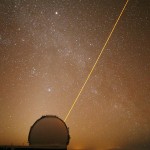
The first Laser Guide Star Adaptive Optics system on a large telescope was commissioned on the Keck II telescope in 2004 and, among many other firsts, helped reveal the black hole at the center of the Milky Way – one the most significant astronomical discoveries. The second laser system was installed in 2011 on the Keck I telescope, propelling Keck Observatory’s lead as the premiere Adaptive Optics research facility in the world. To date more than 240 science results from these laser systems have been published in astronomical journals.
Continue reading “New Laser Marks Ground Zero for Adaptive Optics Science”

















